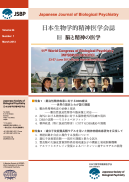Volume 24, Issue 1
Displaying 1-12 of 12 articles from this issue
- |<
- <
- 1
- >
- >|
-
2013Volume 24Issue 1 Pages 1
Published: 2013
Released on J-STAGE: February 16, 2017
Download PDF (131K) -
2013Volume 24Issue 1 Pages 3-10
Published: 2013
Released on J-STAGE: February 16, 2017
Download PDF (359K) -
2013Volume 24Issue 1 Pages 11-21
Published: 2013
Released on J-STAGE: February 16, 2017
Download PDF (395K) -
2013Volume 24Issue 1 Pages 23-29
Published: 2013
Released on J-STAGE: February 16, 2017
Download PDF (325K) -
2013Volume 24Issue 1 Pages 31-33
Published: 2013
Released on J-STAGE: February 16, 2017
Download PDF (226K) -
2013Volume 24Issue 1 Pages 35-41
Published: 2013
Released on J-STAGE: February 16, 2017
Download PDF (416K) -
2013Volume 24Issue 1 Pages 43-48
Published: 2013
Released on J-STAGE: February 16, 2017
Download PDF (291K) -
2013Volume 24Issue 1 Pages 49-55
Published: 2013
Released on J-STAGE: February 16, 2017
Download PDF (317K) -
2013Volume 24Issue 1 Pages 57-61
Published: 2013
Released on J-STAGE: February 16, 2017
Download PDF (338K) -
2013Volume 24Issue 1 Pages 63-67
Published: 2013
Released on J-STAGE: February 16, 2017
Download PDF (281K) -
2013Volume 24Issue 1 Pages 68-69
Published: 2013
Released on J-STAGE: February 16, 2017
Download PDF (173K) -
2013Volume 24Issue 1 Pages 70
Published: 2013
Released on J-STAGE: February 16, 2017
Download PDF (137K)
- |<
- <
- 1
- >
- >|
